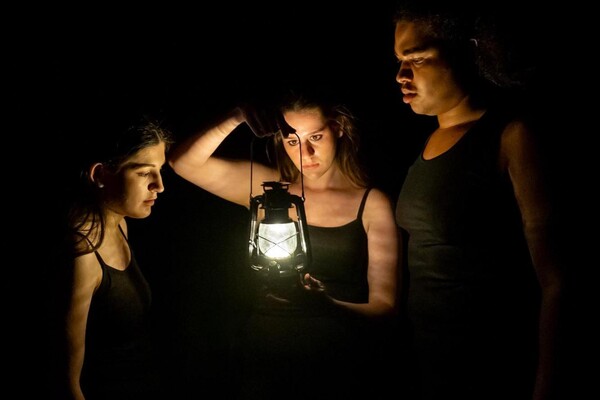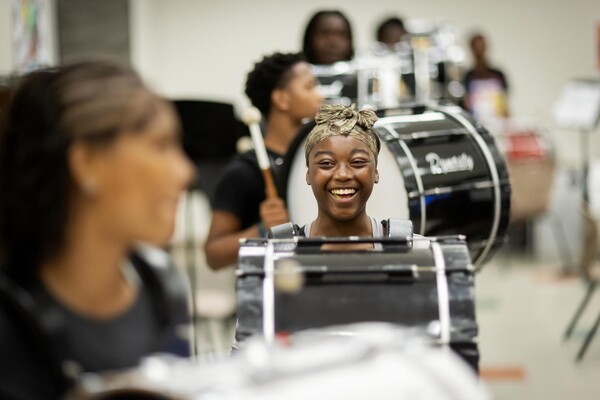
Image: Aditya Irawan/NurPhoto via AP Images
Penn students, faculty and staff who worked on NBC’s Decision Desk on Election night gave a behind-the-scenes look at the high-pressure evening during a virtual panel and chat, discussing the challenges of counting mail-in ballots to the surprise Democratic losses in the House to why national polling was so off.
The Program on Opinion Research and Election Studies (PORES) offers undergraduates a chance to use their data research and political science skills on NBC’s Decision Desk. It’s an only-at-Penn opportunity made possible because John Lapinski isn’t just the director of PORES, faculty director of the Fels Institute of Government, and faculty director of the Robert A. Fox Leadership Program; he’s also the director of elections at NBC News. When he arrived at Penn, Lapinski formed a bridge from the University to NBC with the creation of student and faculty jobs on the Decision Desk.
The pandemic created issues not just for structuring the Decision Desk, which moved from its usual post at NBC headquarters at 30 Rockefeller Plaza to students’ homes and an outpost at the Comcast Center in Philadelphia, but also for how election results would come in and when. The new ways Americans voted this year—early voting, mail-in voting, and traditional in-person voting—added unprecedented challenges, said Lapinski during the virtual panel discussion.
For political scientist Marc Meredith, the biggest difference this election was the polarization of the use of different voting methods and how the different ways people chose to vote would come into play when projecting winners.
The pandemic pushed many more people to use mail-in voting, but President Donald Trump had also urged his supporters not to take part in it, said Meredith, an expert in mail voting who testified in high profile mail-in voting lawsuits this election cycle. With states counting these votes in different orders, typical tallying went out the window. For instance, the statistical model early in the night showed Joseph R. Biden winning Ohio, but that was because early and mail votes were counted first, he said. Waiting for in-person votes to trickle in as the night wore on shifted it to Trump.
The Decision Desk won’t call a race until they are 99.5% confident in the results, and many of the traditional models they’ve used in the past didn’t help in projecting this time around.
“This particular cycle, more than ever, we all felt the weight on us if we got a call wrong, that the consequences could be great,” Lapinski said. He referenced The Associated Press and Fox News calling Arizona days before NBC and other outlets did as an example of a call that could have gone very differently. It was a point Lapinski also made in a talk about the election at the Center for the Advanced Study of India.
“We were quite a bit behind making some of these projections, but in many of those instances it was very intentional because we don’t really care what anybody else does,” Lapinski said. “We have to make sure that we’re getting it right.”
Matthew Levendusky, a political scientist with an expertise in polarization, said this time around he was cautious about predicting voter turnout and about who would end up being mobilized. As it stands now, the 2020 election had the highest turnout since the election of 1900, he said, and he was concerned about how that might shift things.
Because of the turnout issue, combined with the new ways people were voting, he waited much longer to make calls that he would have made earlier in the past.
“High turnout doesn’t just help Democrats,” he said. “Consistent with a lot of political science literature, it ends up helping both sides.”
Two states they were very cautious about were Maine and Arizona. Maine uses ranked-choice voting, so it was critical that Biden and U.S. Sen. Susan Collins had more than 50% of the vote, otherwise voters’ second choices get factored in.
In Arizona, they were concerned because in past elections they saw a marked blue shift in the late-counted absentee votes. It turned out it was a state where the polling was accurate, and Biden won by a very thin margin, Meredith said.
Not knowing how much of the vote was still outstanding created uncertainty, Lapinski said, leading to lots of discussions and calling of election officials in various counties and states trying to get a better handle on what was still out.
Of all the surprises of the evening, all panelists agreed that Democrats losing House seats was the biggest one.
Stephen Pettigrew was in charge of the House races on the Decision Desk.
“I don’t think anybody out there really expected the House to be as close as it ended up being,” he said. “Republicans picked up about a dozen or so seats, and the Democrats’ majority is now down to just maybe four or five seats.”
No matter how big of a red or blue wave, there will always be House races that are razor thin, and this year was no exception, he said. He noted that there are two House races where there still is no official winner because the margin is six votes and 12 votes, he said.
“A lot of this is tied up with challenges brought by the pandemic, but there’s a political story here with what was going on in the House,” he said.
The team does lots of simulations before Election Day, some creating a good night for Democrats, and others having Trump win and Republicans doing well, to make sure the Desk can pivot as the votes come in, Lapinski said, “so we don’t get something baked into our head.”
Joelle Gross, a senior majoring in politics, philosophy, and economics with a minor in survey research and data analytics, was in charge of two states on Election night and kept track of what how vote was reported out by county officials.
“I was pretty nervous because we all knew how consequential these results would be,” said Gross, of Caldwell, New Jersey. “Overall it was just very exciting to have contributed a little bit to what we were seeing happen on TV.”
Shehroz Malik, a liberal and professional studies junior from Somerset, New Jersey, also worked on the desk and said the main takeaway from his night was how elections in the United States are done at such a micro level, from county to county and precinct to precinct. Because they’re so decentralized, he said the media have a huge role in tallying the vote, functioning as an institution in our democracy.
“It was really exciting to just be part of the process for the entire day,” said Malik.
One thing the whole panel agreed on is that polling is at an inflection point in the U.S. PORES will be central to an upcoming report from the American Association of Public Opinion Researchers that will likely have a harsh assessment of polling in 2020, Lapinski said.
Polling wasn’t too far off in places like Arizona, Georgia, and Colorado, but it missed the mark badly in the Midwest, in Florida, and in Rust Belt states, Levendusky said.
“Going in, my expectation was that the polls were probably very slightly overstating Biden’s support, but I didn’t think it would be as dramatic as it was,” he said. “There’s going to have to be some introspection into why that was the case.”
One thing pollsters could do to make their work more credible for the public is to talk a bit more about the uncertainty in any poll because “there’s both an art and a science to this,” Levendusky said.
Pettigrew, director of data science at PORES and a senior analyst on the Decision Desk, is already looking ahead to the runoff elections in Georgia, his home state.
Despite optimism from Democrats about turning the Senate around, it’s difficult to say what could potentially happen in the runoff, he said, especially since it’s hard to run polls around the holidays.
He’s hopeful it won’t drag out for days or weeks and is reassured that the Republican secretary of state in Georgia is dedicated to getting the process right.
That there are two runoff elections in the same state on the same night is something he’s never run into before, and he said he can’t remember the last time there’s ever been an election of that sort, particularly when it will be determining control of the Senate.
“It’s hugely consequential,” he said. “It seems that 2020 is the year that just keeps on giving, and in the first week of January we get a little more of 2020 in 2021.”
Kristen de Groot

Image: Aditya Irawan/NurPhoto via AP Images

nocred

Image: Michael Levine

A West Philadelphia High School student practices the drum as part of a July summer program in partnership with the Netter Center for Community Partnerships and nonprofit Musicopia.
nocred